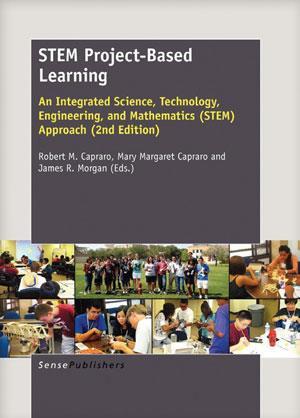Integrated science teaching - extensive coverage of STEM project-based learning
Robert M Capraro, Mary M Capraro and James R Morgan (eds)
Sense Publishers
2013 | 224pp | £28 (PB)
ISBN 9789462091412

The editors of the second edition of this publication state that project-based learning (PBL) is not to be confused with problem-based learning (pbl). PBL is an approach that has been used successfully in a variety of disciplines. When applied to STEM (science, technology, engineering and mathematics) it draws together concepts from the different subject areas, using a variety of different approaches, in the solution of a task requiring clear outcomes.
The authors define PBL as being broader than pbl and distinguish the two approaches by explaining that the former can be composed of several linked problems requiring more than one student to solve them. This distinction is not obvious, although one conclusion from reading the text is that pbl can be viewed as a subset of PBL.
The text provides a comprehensive overview of the various aspects of PBL. It begins with a consideration of the educational theories underpinning the approach and progresses to detailed descriptions of the hows, whens and wheres of delivering such activities.
There are stand-alone chapters on the successful design of projects, integrating technology and the benefits of using virtual worlds to support PBL. The authors have considered a range of issues including classroom management, assessment, involving students from both ends of the ability spectrum and students for whom English is not the first language. Thus the text is comprehensive in the treatment of the field. A substantial portion of the book is composed of appendices that include suggested PBL activities and some useful supporting material.
One of the limitations of PBL is assessing group work and the book avoids any practical consideration of this aspect – although helpful team and self-evaluation sheets are included in the appendices.
The text is clearly written by an experienced practitioner and will be of most value to those either using STEM-based PBL or considering embarking on its deployment. The activities described relate to experiences within the US educational system. The examples cited are pitched at secondary level, however the density of the UK National Curriculum prohibits project-based learning on the scale advocated here.
The editors suggest that the theories and practices are equally transferable to both younger (primary/secondary) and older (undergraduate) audiences. This is true to an extent. Although problem-based learning is becoming widespread in UK higher education chemistry departments, most practitioners would struggle to accommodate this truly STEM-based approach of wider project-based learning. The text encompasses a wealth of educational theories supporting the practice but much of the detail is not relevant for this level and the examples cited not appropriate.
In conclusion this text provides an extensive coverage of STEM-based PBL, which would be of more value to the US market, despite the obvious experience of the contributors and the breadth of the coverage.
Purchase STEM project-based learning from Amazon.co.uk









No comments yet